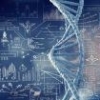"Biomarkers of the physiological state and biological age of individuals.
Biomarkers in human research are, on the one hand, used to detect individual variability in the progress of ageing, as risk indicators, and, on the other hand, for monitoring the response to
interventions. Different biomarkers have been developed to answer different questions, for example, to monitor the physiological state of individuals, predict the onset and/or progression of age-related diseases, detect the physiological vulnerability of elderly to poor clinical outcomes or predict mortality. Biomarkers of the risk of age-related diseases have been developed with great success. No consensus has yet been reached on biomarkers of biological age, that is, the mismatch between chronological age and the stage of an individual along the ageing process. These biomarkers should ideally meet a number of criteria, such as those defined by the American Federation for Aging Research (AFAR): they should (1) mark the individual stage of ageing and predict mortality better than chronological age; (2) monitor ageing in a range of systems and not the effects of disease; and (3) allow longitudinal tracking (for example, by blood tests or imaging techniques) in animals and humans171. Several types of biomarker of the physiological state include whole-system indicators of physical or mental capability (for example, locomotor function, strength, balance, cognition and activity during daily living), physiological reserve (for example, respiratory and cardiovascular function) and the systemic capacities to regulate lipid and glucose metabolism and immunity (for example, insulin, IL-6 and CRP)33,172. In addition to single markers, multi-marker indicators have been generated based on assays of multi-organ functionality and/or molecular characteristics. Physiological vulnerability later in life, that is, ‘frailty’ at ages above 80 years is generally described by low physical activity, muscle weakness, slowed performance, fatigue or poor endurance and unintentional weight loss. About 50 different frailty algorithms are available, the ‘frailty phenotype’173 and ‘frailty index’174 being the most commonly used clinically. For early phases of life, other scores, such as the ‘Pace of Aging’ score43, have been generated. More recently, multi-marker indicators of biological age have been based on age-related changes in the transcriptome175, epigenome176,177, metabolome178 and structural neuroimaging179. These await systematic testing and comparison with each other and with traditional parameters, in relation to clinical decisions and intervention studies. Different indicators of biological age (telomere shortening, epigenetic clocks and pace of ageing) seem to reflect different aspects of physiological decline180. Because long-lasting cohort studies contain many ageing phenotypes and a large amount of clinical, imaging and molecular data, collected at multiple time points, these studies could allow systematic comparisons and development of a multivariate mix of marker profiles with the strongest predictive power."
Did someone studied LP(a) as a possibly proxy of IL-6 I never measured? Thanks.
Partridge L, Deelen J, Slagboom PE. Facing up to the global challenges of ageing. Nature. 2018;561(7721):45-56.


























































